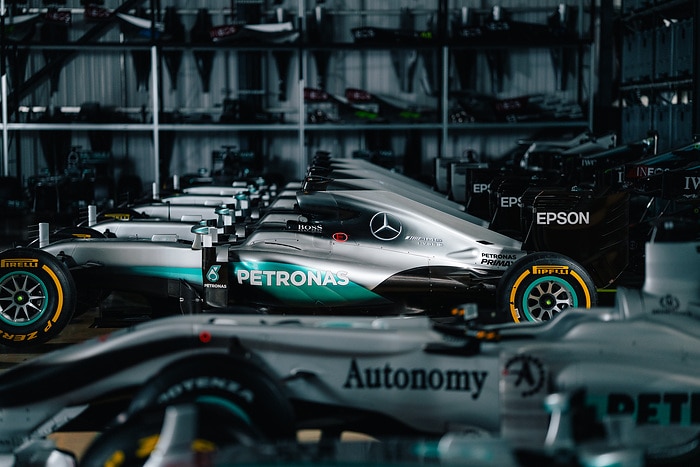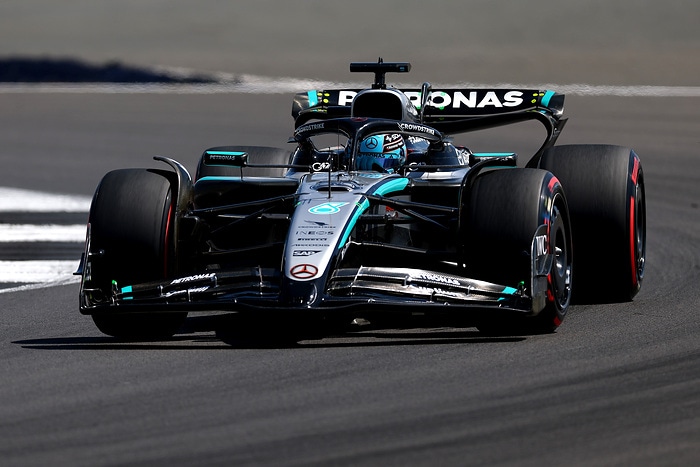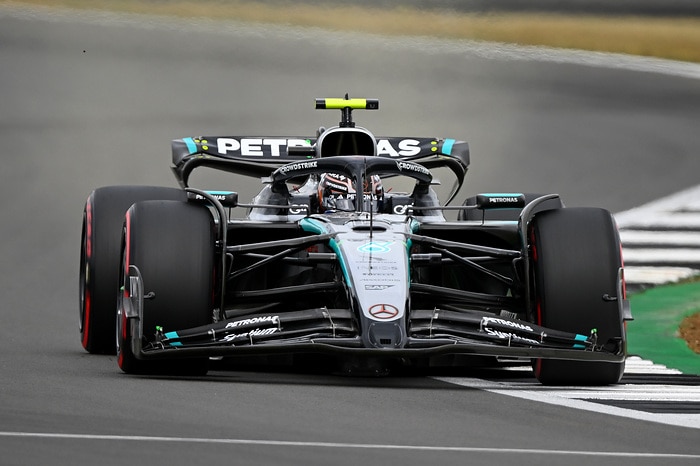
30 years of Mercedes-AMG Motorsport: At the start of the 2018 anniversary season, we reminisce with former Daimler AG board member Jürgen Hubbert about the return of the brand to motorsport and various other emotional memories from the past 30 years.
- About strange races: “The AVUS – because a car slid over the finish line upside down. That was just amazing!”
- On laying the groundwork: “Our American colleagues looked at the cup and asked: ‘What’s that?’”
- On what can be learnt from motorsport: “Things that take months, sometimes years, in a standard test can be tried out under race conditions within a matter of weeks to see if they work or not.”
How did the decision come about after so many years to enter these two series – Formula 1 and the DTM – at the same time in 1988?
Jürgen Hubbert: You have to understand that there were people in the company who never stopped being involved in motorsport, even during a period when we weren’t officially doing it. This went on with the tacit permission and support of Dr Hörnig who was chairman of the board in those days. He gave the Waxenbergers of this world a free hand to dabble in motorsport. When I was appointed as deputy member of the Executive Board in 1987 and looked at the situation the company was in, it became clear to me that we had got ourselves into some difficulties. Due to an ongoing internal debate, we had been neglecting our vehicles. The focus was on becoming an ‘ Integrated Technology Group’. I hoped that we could polish up the image of the brand by means of motorsport activities. I remembered the 1950s, when I was still at school and took a lively interest in the sport, and I also looked back to the 1930s. There were always times when the company was not doing all that well and it was motorsport that gave the brand an extra push. It had worked on those occasions, and I had something like that at the back of my mind. Then something happened which helped us. Our tuning partner at the time, Hans-Werner Aufrecht, got together with Burkhard Bovensiepen to devise a new set of regulations for production car sport, and the two of them founded the ITR. HWA lobbied vigorously within the company to get involved in the series. That eventually happened in 1988.
How hard was it to get motorsport re-established in the group?
Jürgen Hubbert: We had a fight on our hands initially. The company was directing its attention to other areas up to 1995 when Jürgen Schrempp came along and said: “Back to the car!” Up to that point, it had always been a struggle. Werner Niefer was essentially on our side, as was his successor from 1993, Helmut Werner. I still remember when we became Formula 1 world champions in 1998. At that time, I was in Japan with Dieter Zetsche. We won the world championship in the final race, picked up the trophy, dashed for the plane, booked an extra seat for this huge cup and flew to Detroit. We wanted to meet up with our Chrysler board colleagues at Auburn Hills and present them with the trophy. We both imagined that we would be warmly congratulated. But our American colleagues took one look at the trophy and asked “What’s that?”. They couldn’t understand why we had turned up with a cup from a racing series none of them had ever heard of. Fortunately, the enthusiasm for motor racing within the group has since changed for the better.
How important was the DTM for the development of Mercedes and AMG?
Jürgen Hubbert: As I said, at first it was mainly about giving the brand – and especially the 190 model – a more positive and sporty image. With the 190, we were entering a new market segment in 1982. Long before I joined the board, we were racing with the 190. For example, with Senna at the Nürburgring, just to show that the cars were suited for that purpose as well. Then there were the world record attempts at Nardo. But the biggest push came with our entry in the DTM, and that brought our first successes on the track. Parallel with that, interest grew in performance-enhanced vehicles sporting the Mercedes AMG badge.
So success in the DTM helped the brand a lot in the 1990s?
Jürgen Hubbert: Absolutely! If you’re the sort of person with a feel for fast cars, where else can you get to see them close up? In the DTM, the fans stand next to the racing cars. We have consistently made a point of facilitating that. Norbert Haug was always a marketing man who wanted to involve customers. From very early on, we had lavish hospitality suites where customers were welcome to come. And Norbert made sure that the drivers put in an appearance as well. The public came within touching distance not only of the cars but also of the drivers. Then we had the idea of the ‘race taxi’. These are all things that had the desired effect. For example, I went to Hockenheim with my whole team, and all of my departmental and divisional heads got a ride in a racing car. Every one of them came back with a twinkle in their eye. That motivated people inside and outside the company. We achieved the impact that we had set out to achieve. And the fact that our recent successes in Formula 1 have made Mercedes such a dominant force today all goes back to this concept.
You just mentioned Norbert Haug. I read an interview with a former Audi high-up who said that Mercedes was the first brand to recognise the vital role of marketing in motor racing. How did you reach the decision to make a journalist a director of motorsport?
Jürgen Hubbert: In Jochen Neerpasch, we had someone who understood the business, but he had no idea about marketing. He concerned himself with the drivers, the regulations and all sorts of other important things. And ultimately, the decision was made. I narrowed it down to two excellent candidates and, strangely enough, both had worked at “Auto, Motor und Sport”. Both of them were interviewed by Werner Niefer. You know how it is: “Where are you from?” – “From Pforzheim!” – “Ah, from Pforzheim – that’s half the battle!” That was enough to put the other out of the running. Sometimes it’s as simple as that.
Which drivers have been the defining faces of Mercedes in the 30 years of the DTM?
Jürgen Hubbert: At the very beginning, it was Roland Asch. He was so down to earth, of course, and he talked the local Swabian dialect, which went down very well around here. And he was also very fast. We had a few whose name you heard once, maybe twice, and after that nothing much again. There are some names that even I can’
Source : www.Mercedes-benz.com






















